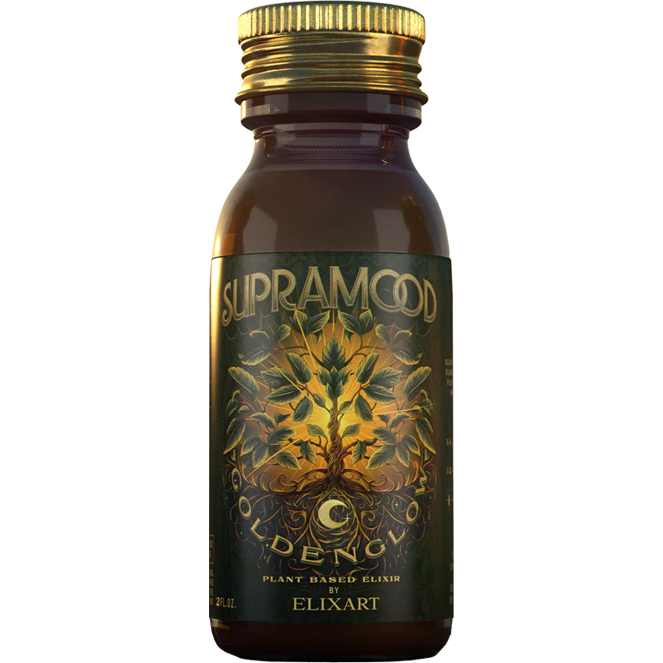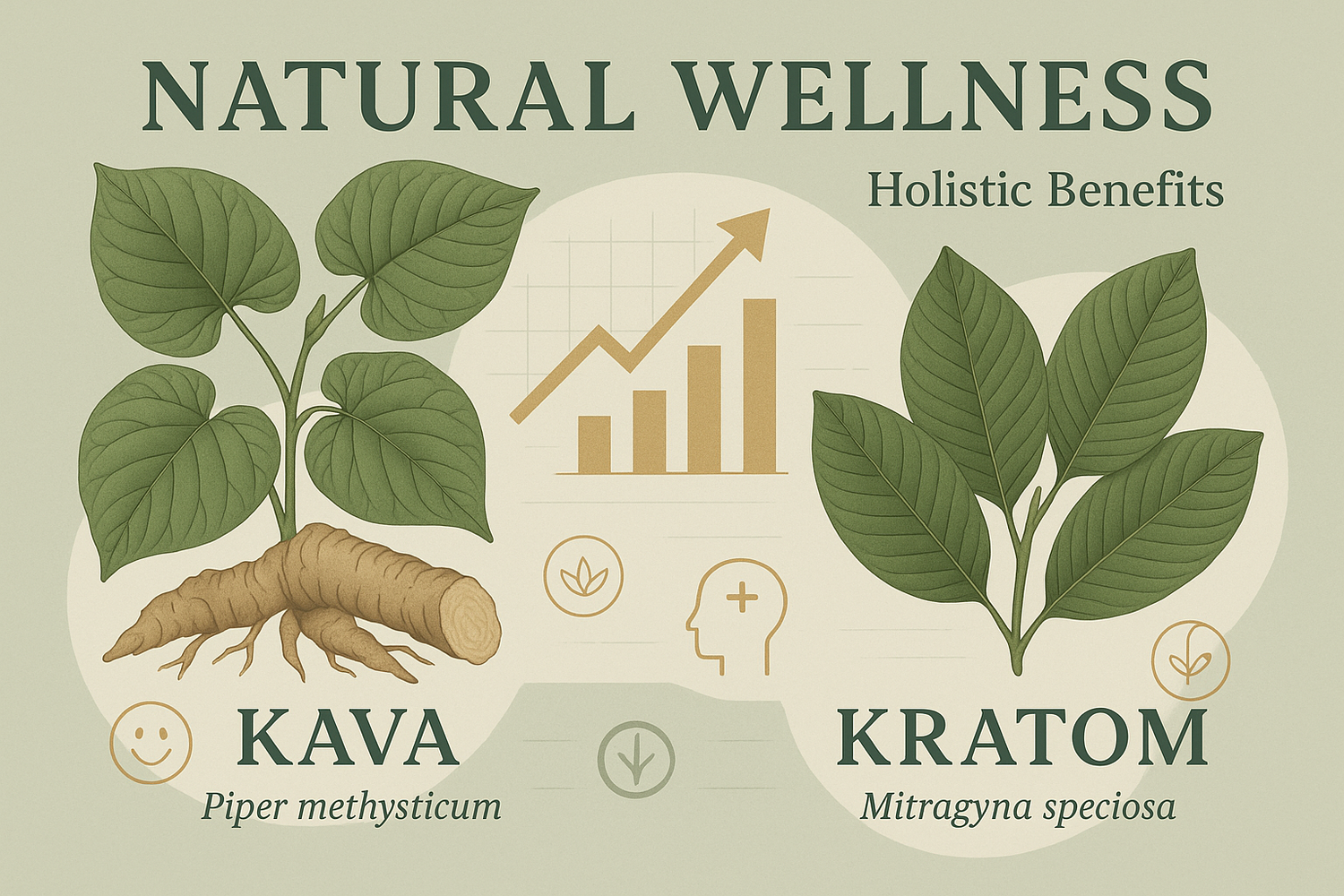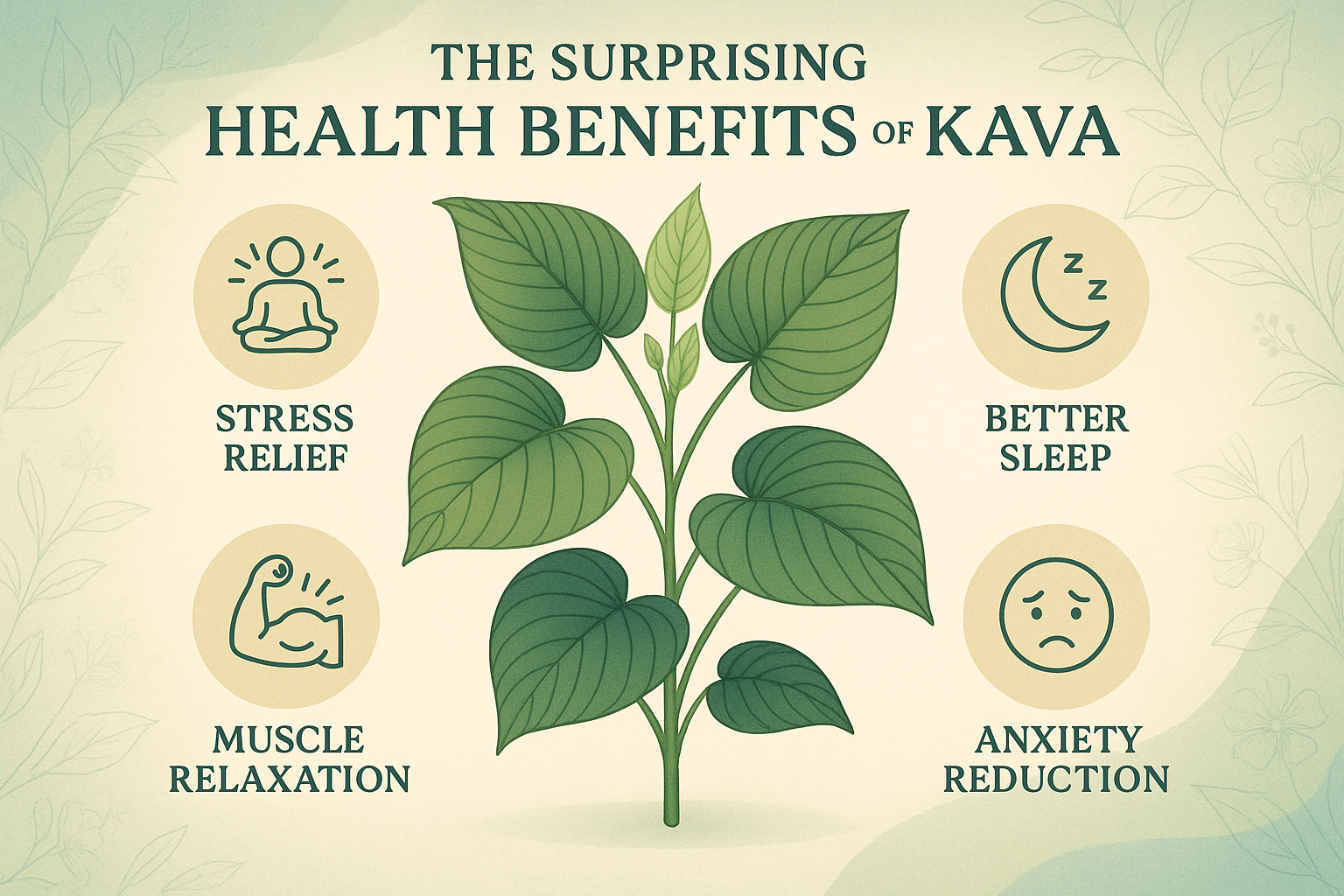Kava and kratom are natural, plant-derived products that have been gaining popularity as alcohol alternatives. Kava originates from the Polynesian Islands, where it's traditionally consumed for relaxation, anxiety relief, and promoting sleep. Kratom, derived from a tree in the coffee family, is known for its multiple benefits including pain relief, increased energy, and mood enhancement.
The rising trend of kava and kratom can be attributed to their potential holistic benefits. These benefits span mental well-being, pain management, and overall physical health. As people seek safer, non-alcoholic alternatives in social settings, kava and kratom offer compelling options.
The Sober Curiosity Movement and the Demand for Alcohol Alternatives
The sober curiosity movement encourages individuals to rethink their relationship with alcohol. It inspires people to explore alternative beverages that provide relaxation or social enjoyment without the adverse effects associated with alcohol consumption.
Influence on Beverage Choices
More individuals are opting for nonalcoholic beverages as they seek a healthier lifestyle. This shift is driven by a desire to avoid hangovers, improve mental clarity, and reduce long-term health risks. The rise of the sober curiosity movement has led to an increased demand for a variety of nonalcoholic options.
Cultural Shift
Social settings are increasingly embracing non-alcoholic drinks. Events like sober raves and alcohol-free bars, such as the innovative Kavahana, are becoming popular. These establishments cater to those who wish to participate in social activities without consuming alcohol. This cultural shift signifies a broader acceptance and normalization of choosing nonalcoholic alternatives.
Kava and Kratom as Alcohol Alternatives
Both kava and kratom have found their place within this landscape:
- Kava: Known for its calming effects, kava offers relaxation similar to alcohol but without the intoxication. Kava bars are emerging as trendy spots for socializing while enjoying its soothing benefits.
- Kratom: Valued for its stimulating and mood-enhancing properties, kratom serves as another viable alternative. It's particularly appealing for those seeking an energy boost or pain relief without resorting to conventional stimulants or painkillers.
By fitting seamlessly into the world of alcohol alternatives, kava and kratom provide unique experiences that cater to the growing community of the sober curious.
1. The Relaxing Power of Kava
Understanding the History and Cultural Significance of Kava in Polynesian Societies
Kava, known scientifically as Piper methysticum, holds a profound place in Polynesian Island cultures. Traditionally, it has been used in various ceremonies, social gatherings, and rituals to promote community bonding and spiritual connection. For centuries, kava has been revered for its ability to foster relaxation and tranquility among its users.
Traditional Uses of Kava for Inducing Relaxation
In many Polynesian societies, kava is consumed to ease anxiety, promote relaxation, and improve sleep quality. The active compounds in kava, called kavalactones, interact with the brain's neurotransmitters to produce calming effects without impairing cognitive function. This makes it a popular choice for those seeking natural remedies for stress relief and better sleep.
Emergence of Kava Bars
The popularity of kava has transcended its traditional boundaries, leading to the emergence of kava bars in various parts of the world. These establishments provide a communal space where people can experience the soothing effects of kava firsthand. Unlike typical bars that serve alcohol, kava bars offer a non-alcoholic alternative that appeals to those who are part of the sober curiosity movement or simply looking for a different kind of relaxation experience.
Potential Health Benefits and Risks Associated with Kava Consumption
Health Benefits:
- Anxiety Relief: Kava is widely recognized for its potential to reduce anxiety levels.
- Sleep Promotion: Many users report improved sleep quality after consuming kava.
- Muscle Relaxation: Some evidence suggests that kava may help alleviate muscle tension.
Risks:
- Liver Toxicity: There have been reports linking excessive kava consumption to liver damage.
- Interaction with Medications: Kava can interact negatively with certain medications, making it essential to consult a healthcare provider before use.
- Dependence: While less likely than other substances, there is potential for psychological dependence with prolonged use.
Understanding both the benefits and risks associated with kava can help consumers make informed choices about incorporating this traditional drink into their wellness routines.
2. Exploring the Energizing and Mood-Enhancing Properties of Kratom
Kratom, a herbal supplement derived from the leaves of the Mitragyna speciosa tree, is celebrated for its stimulant and euphoric effects. Originating from Southeast Asia, kratom has been traditionally used by laborers to combat fatigue and increase productivity.
Potential Benefits of Kratom
1. Managing Pain: One of the notable benefits of kratom is its potential for pain relief. Alkaloids like mitragynine and 7-hydroxymitragynine interact with opioid receptors in the brain, providing an analgesic effect. This makes kratom a popular alternative for individuals seeking non-pharmaceutical pain management solutions.
2. Increasing Energy Levels: Kratom's stimulating properties can help boost energy levels. Low doses are often reported to enhance alertness and physical performance, making it appealing to those needing an extra push during their day-to-day activities.
3. Enhancing Mood: Kratom may also contribute to improved mental well-being. Users frequently describe experiencing elevated mood and a sense of euphoria. These effects can be attributed to its interaction with neurotransmitters responsible for regulating mood.
Kratom and Opioid Withdrawal Relief
The use of kratom as an aid for opioid withdrawal symptoms is a topic of significant interest and controversy. Due to its partial agonist activity at opioid receptors, kratom can mimic some effects of opioids without causing severe respiratory depression. This has led some individuals to turn to kratom as a means to alleviate withdrawal symptoms such as:
- Anxiety
- Insomnia
- Muscle aches
Despite these potential benefits, it's essential to approach kratom with caution due to risks such as physical dependence and possible addiction. The balance between its therapeutic advantages and potential risks continues to be a subject of ongoing research.
In summary, kratom offers intriguing possibilities for pain relief, energy enhancement, and mood improvement, while also presenting a controversial option for managing opioid withdrawal symptoms.
Comparing the Effects and Mechanisms of Kava vs Kratom
Shared and Distinct Pharmacological Properties
Kava and kratom are both derived from plants, but they have different effects on the body. However, they do share some similarities:
- Kava primarily affects the GABAergic system, which is responsible for regulating anxiety and inducing relaxation.
- Kratom, on the other hand, interacts with opioid receptors in the brain, offering pain relief and euphoric effects.
How Kava and Kratom Work in the Body
Understanding how kava and kratom work in the body can help us understand why they have different effects:
Kava's Interaction with the GABAergic System
Kava promotes relaxation and reduces anxiety by enhancing the activity of gamma-aminobutyric acid (GABA), a neurotransmitter that inhibits nerve transmission in the brain. This is similar to how benzodiazepines work, although kava is considered less potent.
Kratom's Interaction with Opioid Receptors
On the other hand, kratom binds to mu-opioid receptors, similar to opioids like morphine. This interaction leads to pain relief, mood enhancement, and increased energy levels. However, high doses of kratom can have sedative effects due to its impact on these receptors.
Different Uses of Kava and Kratom
Based on their mechanisms of action, kava and kratom are often used for different purposes:
- Kava is commonly chosen for stress relief and sleep aid due to its calming effects on the GABAergic system.
- Kratom, on the other hand, is sought after for pain management and energy enhancement because of its interaction with opioid receptors.
The Role of Kava, Kratom, and Mindfulness in Holistic Wellness Practices
Enhancing Well-Being through Kava, Kratom, and Mindfulness
Kava and kratom have become popular in holistic wellness practices because of their unique properties that can complement mental health therapies and pain management strategies. When used together with mindfulness techniques like meditation, these natural substances can contribute to a comprehensive approach to well-being.
Potential Benefits for Mental Health and Pain Management
Kava:
- Known for its calming effects, kava can help reduce anxiety and improve sleep quality.
- It has been traditionally used in Polynesian cultures to promote relaxation and social bonding.
Kratom:
- Kratom offers stimulant properties that can boost mood and increase energy levels.
- Some users have found it helpful for managing chronic pain and easing symptoms of opioid withdrawal.
Integrating Mindfulness Techniques
Mindfulness techniques like meditation can amplify the benefits of kava and kratom. Practicing mindfulness helps individuals become more aware of their mental state, allowing them to experience the calming or energizing effects of these substances more deeply. This combination promotes a balanced approach to mental health and physical well-being.
Responsible Usage Guidelines for Enthusiasts
To ensure safe consumption of kava and kratom:
- Start with Low Doses: Begin with small amounts to gauge your tolerance levels.
- Monitor Effects: Pay attention to how your body responds, especially if you're also using other wellness practices.
- Avoid Daily Use: Using them every day may lead to tolerance or dependency, especially with kratom.
- Consult Healthcare Providers: Seek advice from medical professionals if you have underlying health conditions or are taking other medications.
Maintaining responsible usage is crucial for maximizing the potential benefits of kava and kratom while minimizing risks. Combining these substances with mindfulness techniques can provide a balanced approach to holistic wellness.
Navigating the Controversies: Safety Profiles and Legal Status
Safety Concerns
Kava and kratom, while offering potential benefits, come with notable safety concerns. Kava, often praised for its calming effects, has been linked to liver toxicity in some cases. This highlights the importance of monitoring consumption and ensuring quality sourcing. On the other hand, kratom's stimulant and euphoric properties raise alarms around addiction and dependency. High doses can lead to severe side effects such as nausea, vomiting, and even psychotic symptoms.
Harm Reduction Practices
To address these safety concerns, consider:
- Moderate Consumption: Start with low doses to gauge your body’s reaction.
- Consult Healthcare Providers: Especially if you have underlying health conditions or are taking other medications.
- Avoid Mixing Substances: Combining kava or kratom with alcohol or other drugs can amplify adverse effects.
Quality Control Measures
The burgeoning popularity of kava bars and kratom cafes necessitates stringent quality control measures. Ensuring consumer protection involves:
- Lab Testing: Products should undergo rigorous testing for contaminants like heavy metals and pesticides.
- Transparent Sourcing: Establishments need to provide information about the origin and processing of their kava and kratom products.
- Educated Staff: Employees should be knowledgeable about the effects and proper usage guidelines to advise patrons accurately.
Regulatory Landscape
The legal status of kava and kratom varies significantly across regions. Some municipalities have imposed bans due to public health concerns. For instance:
- Kratom Bans: Several states in the U.S., including Alabama, Arkansas, Indiana, Rhode Island, Vermont, and Wisconsin, have banned its sale and use.
- Kava Regulations: Although less restricted than kratom, kava is subject to regulations in countries like Germany and Canada due to concerns over liver damage.
Navigating these controversies requires a balanced approach that considers both the therapeutic potential and risks associated with these substances. Emphasizing quality control in kava bars and kratom cafes can mitigate some safety issues, ensuring a safer experience for consumers. Additionally, it's important to be aware of other substances that may pose risks when combined with kava or kratom. For example, products containing cannabis or cannabis-derived compounds should be used with caution due to potential interactions and lack of standardized regulations, as highlighted by the FDA. Taking these factors into account will contribute to a more informed decision-making process regarding the consumption of kava and kratom.
Conclusion
The increasing popularity of kava and kratom as alternatives to alcohol shows that more people are interested in natural solutions. It's important to have a balanced view on how we use them. We should also support more studies on their possible medical uses so that we fully understand their advantages and disadvantages.
Final thoughts:
- The kava and kratom industry has a bright future for those who want holistic advantages.
- If more people start using natural remedies like these, it could lead to better acceptance and inclusion in wellness routines.
Using these choices responsibly can help us become healthier and more knowledgeable about taking care of ourselves.
FAQs (Frequently Asked Questions)
What is the rising trend of kava and kratom as mentioned in the introduction?
The rising trend of kava and kratom refers to their increasing popularity as alcohol alternatives, along with the exploration of their potential holistic benefits for mental well-being, pain management, and more.
How does the concept of sober curiosity influence beverage choices?
The concept of sober curiosity has led to a cultural shift towards embracing non-alcoholic drinks in social settings, creating a demand for alcohol alternatives such as kava and kratom.
What are the potential benefits of kava consumption?
Kava has been traditionally used for inducing relaxation, easing anxiety, improving sleep quality, and is now popularized through kava bars as a means to experience its effects firsthand. However, it is important to examine the potential health benefits and risks associated with kava consumption.
What are the potential benefits of kratom?
Kratom is known for its stimulant and euphoric effects, as well as its potential benefits in managing pain, increasing energy levels, enhancing mood, and controversially, aiding in opioid withdrawal symptoms.
How do kava and kratom compare in terms of their pharmacological properties?
Both kava and kratom have shared and distinct pharmacological properties, interacting with the GABAergic system and opioid receptors respectively. Understanding these mechanisms can provide insight into their effects on the body.
How can kava, kratom, and mindfulness contribute to holistic wellness practices?
Kava, kratom, along with mindfulness techniques can contribute to a comprehensive approach to well-being by complementing mental health therapies and pain management strategies. It's important to explore responsible usage guidelines for enthusiasts of these substances.
What safety concerns should be addressed regarding kava and kratom products?
Common safety concerns associated with kava and kratom products should be addressed along with best practices for harm reduction. Additionally, quality control measures in establishments like kava bars and kratom cafes are necessary to ensure consumer protection.







Leave a comment
This site is protected by hCaptcha and the hCaptcha Privacy Policy and Terms of Service apply.